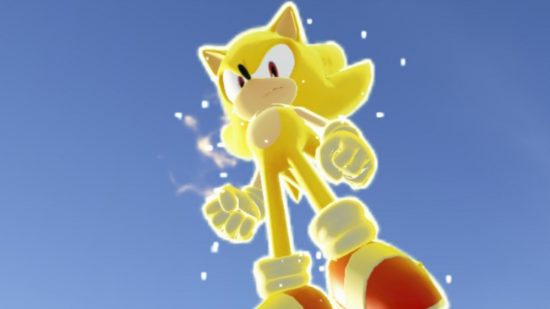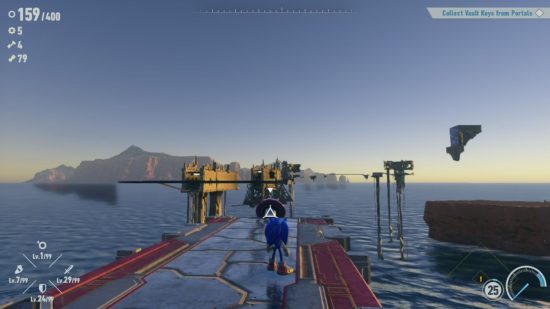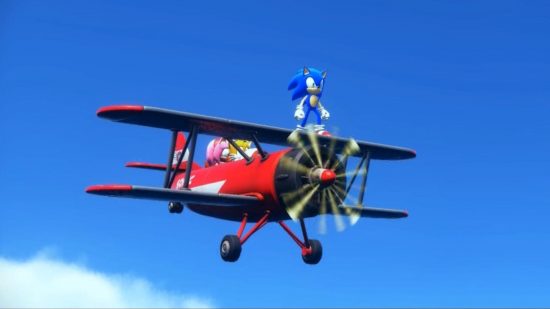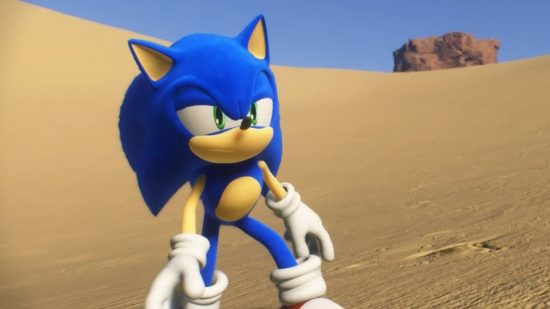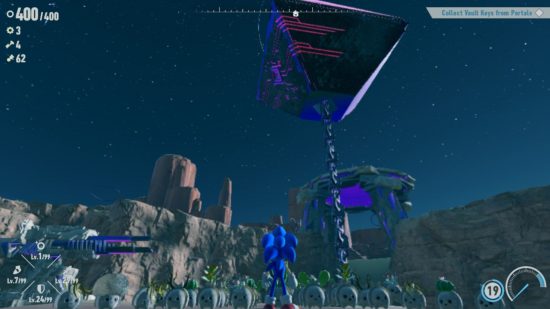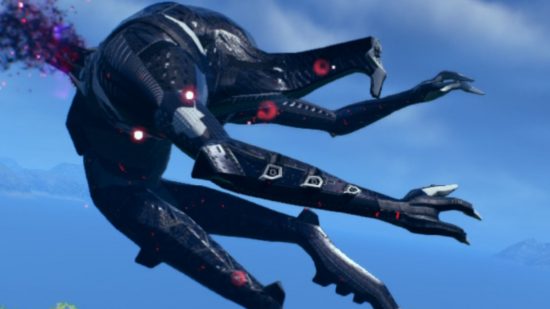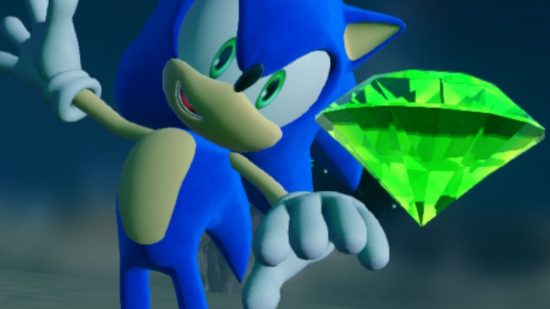Ah, Sonic. There are few who have been treated like you. From the halcyon days of 2D speeding on the Sega Genesis to the post-Sonic ‘06 lull, few gaming mascots can boast as varied a history as the blue blur. Now he’s back, and so is Sega, to try and rewrite history to say that a 3D Sonic title can still be fun, actually, and further, it can embrace the “gotta go fast” ethos in a way that feels fresh for the most part, with a few frustrations thrown in for good measure. Well, we can’t all be perfect, can we, Mario?
This new frontier has been years in the making, with speculation running amok among the Sonic community as to whether this title would live up to the hype, or become yet another 21st-century letdown for a series that often promises so much and delivers the gaming equivalent of a fart in the wind – with some stinkers at that. Still, it’s a new era now, and as you’re about to find out, it might finally be a fresh start for the blue blur.
For a start, the reinvigoration of Sonic gameplay for Frontiers is a gas, for the most part. The positives are clear. The game shares the frenetic fast pace of games like Insomniac’s Spider-Man or the Tony Hawk arcade-style titles by leaning into momentum as a core tenet of experiencing the massive islands, tricky mini-boss battles, and the imposing steel structures that stab through the sky at varying angles. I spent much longer than I should have just nyooming – the proper terminology, I believe – around the islands of Frontiers, finding little challenges or platforming sections to keep me occupied, all while accidentally pushing the story forward by finding precious memory tokens (more on them later).
That’s not to say the gameplay is perfect, though. The islands become less intuitive the further you get into the game, with some of the exploration marred by the third island with areas where the game forces you into a 2D perspective, and though it may seem like there’s some creativity left to the player as to how they traverse the land, you often find out there is a single route to a location, and there’s plenty of time to be wasted trying to find that route. This makes zooming around the map more frustrating, as you leap from structure to structure trying to find the one jump pad that gets you where you want to go.
The narrative at the heart of Frontiers is as convoluted as you would expect from a Sonic game, with the blue blur exploring an unknown location as he tries to free his friends from their new digital bindings. Of course, Doctor Eggman is the reason Sonic finds himself in the strange new world, with the wicked scientist using Sage, a new character who seemingly protects the digital realm or those who end up there, as a means of keeping our hero at bay. It’s very much standard procedure both in plot and delivery, with Sonic tasked to free his friends across three islands from the digital dimension, each requiring memory tokens to unlock progression and discover more about how they ended up in this pixelated predicament.
There is, for the Sonic die-hards, some connection between the events and locations of Frontiers with the rest of the series, but for the casual speedster, the story mainly acts as a framework to justify the inclusion of seemingly ancient societies and hedgehog-killing future tech. I have to admit that I struggle to engage with elements of the story, especially the Koko portions that try and tell an obscure history of the previous denizens of the world of Frontiers, especially when it gets lost in fan-service-laden dialogue between the central characters.
As well as the individual memory tokens for Amy on the first island, Knuckles on the second, and so on, there are also two types of fruit you can pick up to upgrade attack and defence and a bunch of cute little stone figurines Kocos – think BOTW’s Korok seeds – you can use to boost max speed and increase ring capacity. To improve your stats, you visit the Elder Koco and the Hermit Koco, two overgrown NPC versions of your tiny statue friends with enhancement abilities, each adding a little flavour with their dialogue to the mostly abandoned islands.
It’s not just the memory tokens that progress the plot, you also need to collect gears. These open up the individual levels, and in these individual levels, you need to complete requirements to unlock keys that then grant access to the chaos emeralds, each of which you need to find on every island before taking on the boss. And breathe. If you think that sounds a little convoluted, it does, but I promise it looks more daunting on paper than it feels when you play along. Overall, despite being a strange assortment of mechanics you might associate with an action RPG, these helpful collectables and unlock items make you only want to explore more, sending you all over to collect and enhance Sonic’s strength.
In terms of location and design, I’m not alone in thinking that after all the BOTW comparisons, Sonic Frontier’s world feels distinctly different. If there’s a case to be made for this world looking like another, it would probably be that of Death Stranding, especially when the rain is lashing down on Kronos Island. That comparison is purely in terms of visual aesthetics. The similarities with Hideo Kojima’s divisive title end there, as, unlike the desolate lands of the post-apocalyptic postman, in Frontiers, you’ve gotta go fast. It’s not an open world though. Instead, it’s more like Pokémon Legends: Arceus in that approach, as only fast travel connects the five massive islands, so you can’t seamlessly speed between the two. The only problem is that these locations don’t become more impressive. If anything, their quality decreases as you move along, with the third island being a particularly desolate place with little character, at least compared to the first island.
The best way I can describe Sonic’s new combat abilities is as a mixed bag. It does help that there’s a tutorial for almost everything, including the Nier Automata-esque massive baddies that roam the islands of Sonic Frontiers. Still, sometimes the need for speed means that using a spare finger to try and lock on or start a combo can be a bit tricky, especially if you play in the classic speed-orientated mode over the action mode (you get an option at the start of the game, making this criticism semi-invalid, but I’ll make it anyway). Fortunately, the diversity of attacks Sonic can hand out does balance this out as you progress through skill unlocks à la Ghost of Tsushima, with multiple different avenues of attack available after learning a few new moves.
The problem with combat in Frontiers is less the actual mechanics and more who you apply the combat to. The regular enemies and mini-bosses dotted around the map range are often either too easy to beat or a touch too difficult. While opponents like Sumo and Asura feel exactly like what Frontiers should be doing, there are plenty of others like Striker, Tank, and Squid that irritate more than they do challenge your skills. Fortunately, as we get into later, the big boss battles are very different experiences.
Outside of combat, controlling Sonic is as fun as it ever has been, with both the classic Sonic Adventure style levels and the overworld islands offering plenty of opportunities to try different things with the titular speedster. It does feel to me as if slightly more attention to detail has gone into Sonic’s island free-roaming when it comes to movement, with some of the lightning-quick parkour that you can pull on the overworld’s structures not transferring over into the individual levels with quite the same gusto. This creates a sort of problem in that while the levels hark back to the past, the open zones quite clearly are an attempt to make Sonic feel more modern, and the two often feel like they’re taken from different games with different intentions.
The individual levels are the only thing in this game that functions exactly as you would expect them to. With requirements to collect rings, finish in a specific time, and so on, they bring out the kid who played hours of Sonic Adventure DX for Gamecube in me, speeding through either linear 3D – Sonic’s going forward – or 2D – Sonic’s going to the side – this is the bit the retro Sonic fans will engage with the most, and feels even better when offering a refresher from some freerunning around the islands. There could be a little more innovation here, sure – a quicker way to restart levels would be good for a start – and there’s not much to distinguish these portions from what they were twenty years ago, but it worked then, and it works now. Plus, it’s pretty clear from the bulk of the rest of the game that innovation in this department was never on Sega’s mind, it’s basically everything else that needed work.
With a few boss fights now under my belt, I have to say that I’m blown away by the scale of these end-of-island set pieces. You need to take out titans across multiple islands to escape the digital dimension, as you slowly prove your worth to Sage. These towering creatures still imbue the Nier vibes, but now with a decent spoonful of Neon Genesis Evangelion influence, with the first island’s titan a dead ringer for the third angel from the original anime series. The early arrival of Super Sonic in the game also raises the stakes, with the first big battle sending your imagination racing as to what the challenges further down the line might look like. Frontiers never feels better than when you’re halfway through a boss battle, though it’s a shame there’s no way to replay these epic showdowns outside of a new save.
I can’t write this review and not celebrate the excellent work of composer Tomoya Ohtani, who manages to somehow combine classic Sonic gotta-go-fast-type themes with a distinct sense of mystery to mirror the unknown world the titular hedgehog finds himself in the middle of. The use of adaptive music – that which changes with the action – is seamless throughout, with the subdued string and piano accompaniment of exploration exploding into a fuzz-laden synth score as you begin battling a giant robot Squid without jarring the listener. Ohtani clearly gets what Sonic Frontiers is trying to do and he is very much on board.
In terms of performance, Sonic runs surprisingly well on Nintendo Switch, though not faultlessly. There’s a touch of the GTA Trilogy Remaster in that things are a little harder to decipher in the rain, though not nearly as prominent as that example, but when the skies are clear, then so is the screen, and you can speed through the landscape to your heart’s content. There is pop-in, probably more pop-in than I would like, but with the hardware on hand and the ambition of the world design, it’s really hard to argue with. It doesn’t take away from the experience, at least in my opinion, but if you’re looking for the crispest experience and can pass on taking Frontiers handheld, then it’s probably worth opting for a version on another console.
All in all, Frontiers flirts with innovation unlike any Sonic title in a long time but lacks the commitment to ditch some of the ideas that don’t quite cut the mustard. The team behind the blue blur have some big decisions to make, with the possible futures of the iconic character now splitting off like a million threads through the multiverse. Still, regardless of whether this is one small step or one giant leap for the series, it’s not a misstep, it’s a red-and-white sneaker in the right direction, with Sonic closer to his competitors in terms of quality than he has been in a long time.
For more hot takes on the biggest hits for Switch in 2022, be sure to check out our Xenoblade Chronicles 3 review, Splatoon 3 review, and Bayonetta 3 review. That’s a lot of threequels.
Sonic Frontiers Switch review
Sonic is back in a mixed bag of mixed bags, though the positives outweigh the negatives for the most part. Combat can be engaging, depending on the enemy, and zooming across open zones takes a while to get old. Still, if you’re looking for infallible performance, the Switch version might not be the best port of call.
